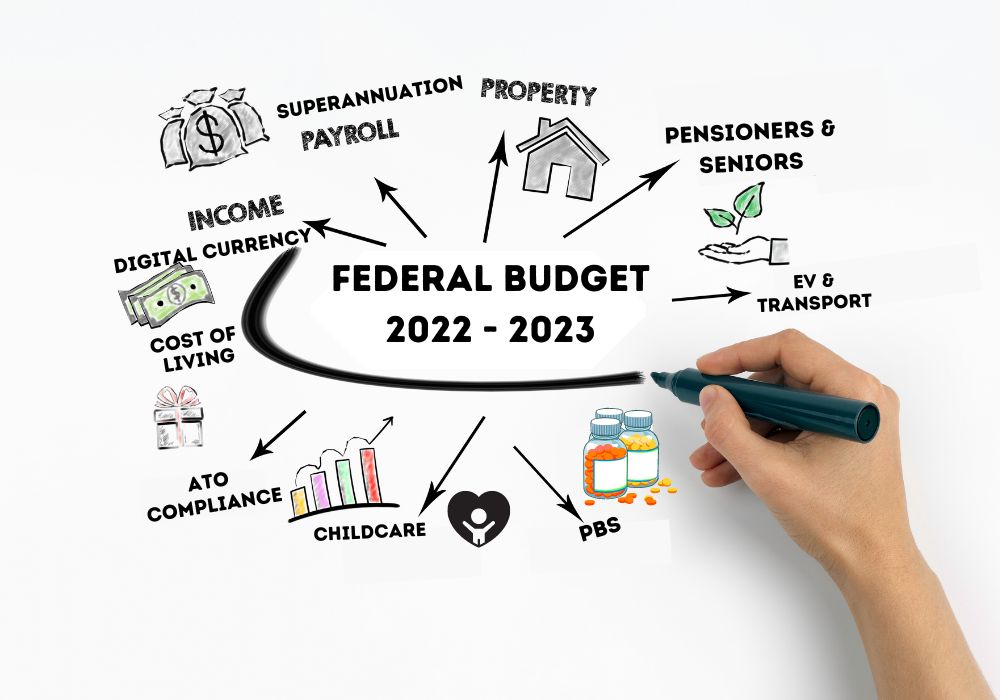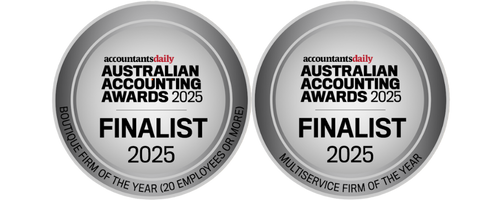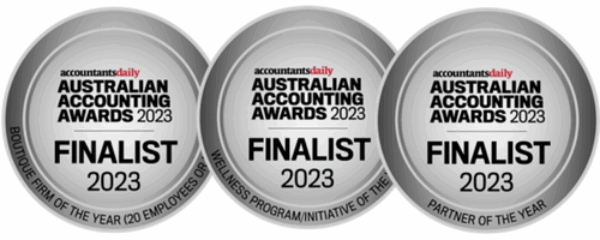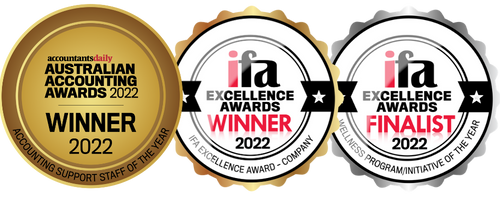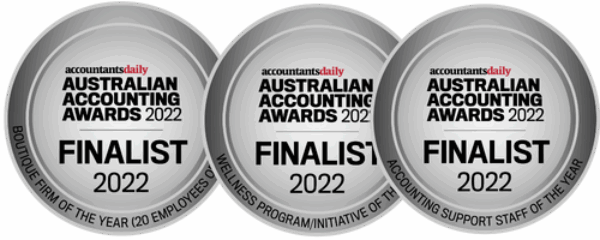On the evening of Tuesday 25 October 2022, Australia’s Treasurer, Jim Chalmers, delivered the nation’s 2022-23 Budget, Labor’s first since taking office earlier this year. While the Budget features a couple of key proposals aimed at providing cost-of-living relief for young families, it had a fairly light touch in the areas of taxation, superannuation and retirement planning.
Walshs CEO, Michael Walsh outlines the key points in relation to some of the key changes to take away.
Electric Car Discounts
The Government will cut taxes on electric cars so that they are affordable for more Australians.
From 1 July 2022, the measure will exempt battery, hydrogen fuel cell and plug-in hybrid electric cars from fringe benefits tax and import tariffs if they have a first retail price below the luxury car tax threshold for fuel-efficient cars, which for the 2023 financial year is $84,916. The car must not have been held or used before 1 July 2022.
When finalising Single Touch Payroll at the end of the financial year, employers will be required to include exempt electric car fringe benefits in an employee’s reportable fringe benefits amount.
Digital Currencies are not Taxed as Foreign Currency
The Government will introduce legislation to clarify that digital currencies (such as Bitcoin) continue to be excluded from the Australian income tax treatment of foreign currency, in line with the Government announcement on 22 June 2022.
This maintains the current tax treatment of digital currencies, including the capital gains tax treatment where they are held as an investment. This measure removes any uncertainty following the decision of the Government of El Salvador to adopt Bitcoin as legal tender and will be backdated to income years that include 1 July 2021.
This does not change the treatment of income earned when holding digital currencies, for example, the tax treatment of staking, air dropping etc.
The exclusion does not apply to digital currencies issued by, or under the authority of, a government agency, which continue to be taxed as foreign currency.
Heavy Vehicle Road User Charge
The Government will increase the Heavy Vehicle Road User Charge rate from 26.4 cents per litre to 27.2 cents per litre of diesel fuel. This will decrease expenditure on the Fuel Tax Credit by $215.7 million over 4 years from 2022–23.
The practical implications of this will be a reduction in the Fuel Tax Credit entitlement for eligible recipients. Primary producers will be most affected by this.
ATO Compliance Activity
The Treasurer announced an extension of existing compliance programs continuing the focus on closing the tax gap.
The Personal Income Tax Compliance Program will be extended to 30 June 2025 and the ATO will use this extension to focus on proactive, preventative and corrective activities in the main areas of non-compliance, including over-claiming of deductions and incorrect reporting of income. This is estimated to raise additional tax of $594 million. In the past 12 months the ATO has released several draft advice and guidance products setting out the ATO’s evolving view on trusts and beneficiary entitlements, and we can expect more products in the coming years focusing on income from business structures and deductions.
Superannuation
Scrapped 3 year SMSF audit requirement
Back in the 2018-19 Budget the Government announced that SMSFs with a history of good record-keeping and compliance – that is, three consecutive years of clear audit reports and annual returns lodged on time, will only be required to have their fund audited every three years. The Government has now officially announced that this measure will not be proceeding.
Deferring relaxation of residency requirements – SMSFs
The government will defer the 1 July 2022 start date of the 2021–22 Budget measures which proposed relaxing the residency requirements for self-managed funds. The revised start date is the financial year commencing on or after the date of Royal Assent of the enabling legislation. This aims to provide some certainty to fund trustees and advice practitioners.
Residency tests
To gain favourable tax concessions, superannuation funds must satisfy some residency tests, including the ‘Central Management & Control Test’, and the ‘Active Member Test’. Failing these tests results in the fund being classed as non-complying, meaning its income and assets are taxed at 45%.
The 2021-22 Budget proposed to relax the residency requirements for SMSFs by extending the time trustees can be temporarily absent from Australia while continuing to meet the ‘Central Management & Control Test’ (from two to five years). In addition, the 2021-22 Budget proposed to abolish the ‘Active Member Test’ altogether, as this test unfairly restricts contributions being made to an SMSF when members are overseas. Under the proposals, members of SMSFs will have the opportunity to continue contributing to their preferred fund when undertaking work or pursuing other activities overseas.
Downsizer contributions – lowering qualifying age
The government will allow more people to make downsizer superannuation contributions, by reducing the minimum eligibility age from 60 to 55 years. This measure will take effect from the start of the first quarter after Royal Assent of the enabling legislation. The maximum downsizer contribution continues to be $300,000 per eligible person.
Childcare
Child Care Subsidy – extending eligibility From 1 July 2023
Child Care Subsidy rates will increase from 85% to 90% for families earning less than $80,000. Subsidy rates will then taper down 1% for each additional $5,000 in family income, until the maximum income threshold of $530,000 is reached. Families will continue to receive the existing higher subsidy rates of up to 95% for their second and subsequent children in care, who are under age 5.
Paid Parental Leave Boost
The government is proposing numerous changes to the Paid Parental Leave scheme.
Extending the number of weeks
Currently, families can access 18 weeks of Paid Parental Leave under the scheme. This comprises of 16 weeks for the birth parent (or an adoptive parent) and 2 weeks for their partner. It is proposed that the number of weeks will increase to 20 weeks in 2023-24, 22 weeks in 2024-25, 24 weeks in 2025-26 and 26 weeks from 2026-27.
Greater flexibility
The 1 July 2023 proposals aimed at making the scheme more flexible:
- Parents will be able to take government-paid leave up to the maximum number of weeks and can use it flexibly between them.
- Single parents will be able to access 26 weeks of leave entitlement.
- Parents will be able to take government-paid leave in blocks as small as a day at a time, with periods of work in between, so they can use their weeks in a way that works best for them.
- There will be assigned ‘use it or lose it’ weeks for each parent, designed to encourage each of them to take that portion of the parental leave.
- Either parent will be able to claim Paid Parental Leave first and both parents can receive the payment at the same time as any employer-funded parental leave.
Broadening eligibility.
Eligibility will be expanded through the introduction of a $350,000 family income test, which families can be assessed under if they don’t meet the individual income test.
Pharmaceutical Benefits Scheme
From 1 January 2023, the government is proposing to decrease the maximum co-payment under the PBS from $42.50 to $30 per script, a 29% reduction.
Pensioners & Seniors
Freeze deeming rates
The Budget looks to freeze income test deeming rates at their current levels for a further two years, until 30 June 2024.
Pensioner relief for downsizing
The Budget contains two key measures to incentivise pensioners to downsize their housing.
- Extending the assets test exemption from 12 months to 24 months, following the sale of their principal dwelling. This will double the time pensioners have to use the sale proceeds to acquire a new principal dwelling, without these funds being counted towards the assets test.
- Changing the income test treatment of principal dwelling proceeds, so that it will only apply the lower deeming rate (currently 0.25%) to these proceeds when calculating deemed income for 24 months after the sale.
Age Pension – Work Bonus
The Work Bonus increases the amount an eligible pensioner can earn from work before it affects their pension rate. Under a recent proposal, a one-off $4,000 credit will be made from December 2022 to the Work Bonus income bank for pensioners. This one-off top-up will increase the amount pensioners can earn from $7,800 to $11,800 this financial year, before their pension is reduced. It will need to be used in the current 2022-23 financial year, meaning the Work Bonus income bank from 1 July 2023 resets to $7,800.
Commonwealth Seniors Health Card – Lifting income thresholds
The income threshold for the Commonwealth Seniors Health Card will be increased from $61,284 to $90,000 for singles and from $98,054 to $144,000 (combined) for couples.
To further discuss these changes or for specialist medical, or private taxation and accounting advice, we welcome you to contact us on 07 3221 5677, enquiries@walshs.com.au or you can book a meeting here.
By Michael Walsh – CEO, Walshs Practice
